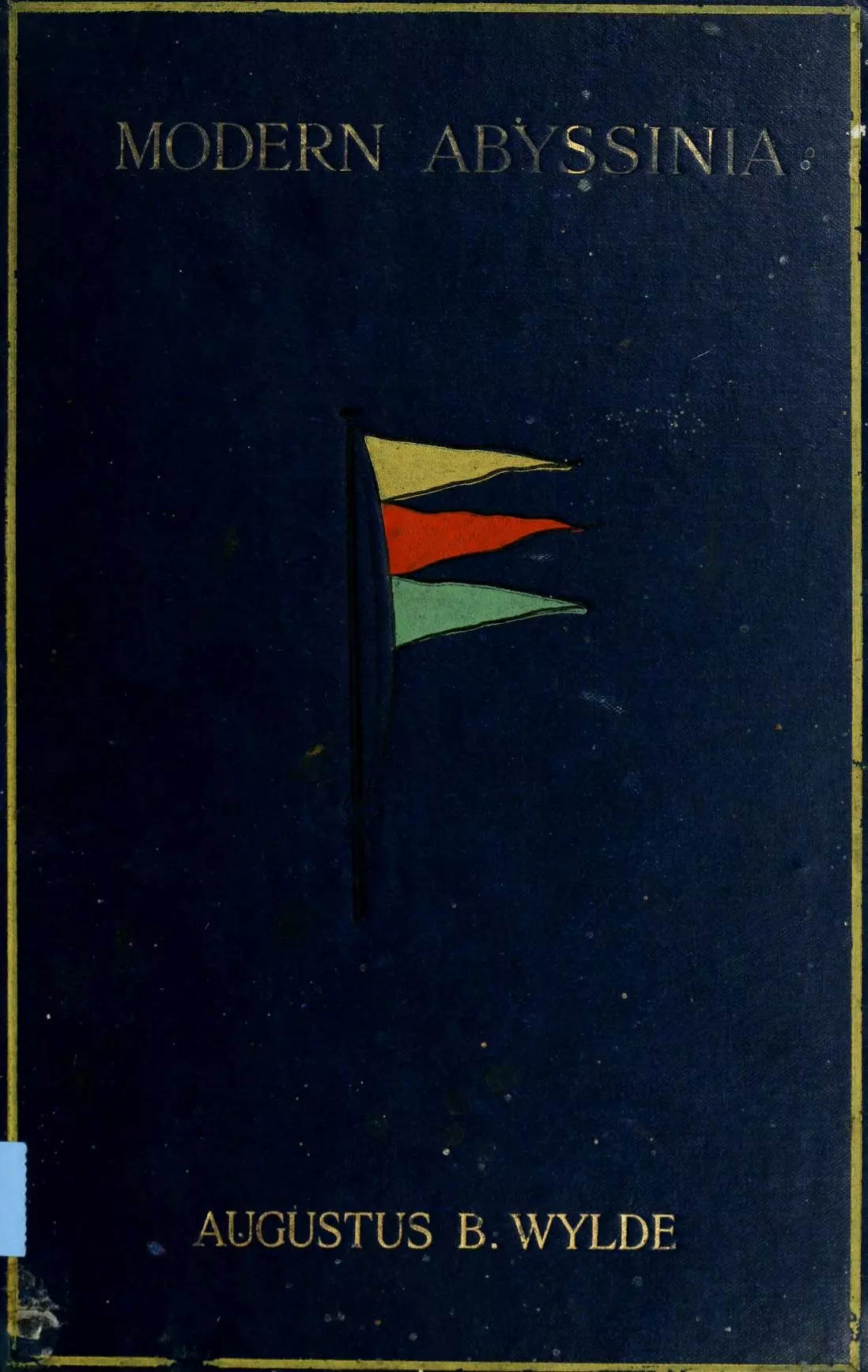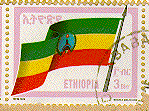

 (ማስታወቂያ)
(ማስታወቂያ)
The Ethiopian flag is a symbol of the country's rich history, culture, and values. It has undergone several changes over the years, reflecting Ethiopia's political and social milestones. From the first Ethiopian flag, which featured the first letter of the Amharic name of Emperor Menelik, to the current emblem of unity, the evolution of the Ethiopian flag is a fascinating journey through time.

In this article, we will explore the different Ethiopian flags throughout history and try to examine their symbolism and significance. Join us, as we embark on a journey through Ethiopia's past and discover the story behind each flag.
No matter how far back we went in history, it is hard to imagine the Ethiopian flag without the three colors; Green, yellow, and red! But how and when did these colors associate with Ethiopia for the first time? In the words of S. Chojnacki, on his publication titled “Some Notes on the History of the Ethiopian National Flag” he states; It is not possible to answer the question of why these three colors were chosen. It may be a result of coincidence or based upon some more or less important reasons that were not recorded for future generations. Nevertheless, one can keep in mind that these are common colors in the Ethiopian landscape; moreover, it is easy to produce them from minerals or plants. There are also religious beliefs passed through oral tradition that associate the origin of the three colors on the Ethiopian flag with the rainbow of the deluge; a reminder and sign of the covenant by God to never destroy the human race again, after the Genesis flood narrative. There are two historical points in Ethiopian history with which the emergence of the three colors is associated; The first one is the Solomonic Dynasty, which was formed in the 13th century. This dynasty’s flag features “the Lion Judah” on a horizontally aligned, top-to-bottom green, yellow, and red background.

This flag is still popular with the Rastafari movement and Ethiopian nationalists. The second one suggests that the three colors first emerged prior to the 1870s as three separate (typically triangular) pennants, and were mostly used by the army and the Ethiopian Orthodox Church.

Since they were tied separately on one pole, the three colors didn’t even have specific order in which they were used. For this reason, different historic recordings suggest varying order of arrangement to what is used now; Green, yellow, and red.
Up until midway through Emperor Menelik’s reign over Ethiopia, the country did not have an official flag. However, history tells us that whenever the Emperor went on a conquest, he would use three long pennons fixed on a long staff. Although there is no evidence to the order of the pennons, and the consistency of their order to that matter, their colors were Green, yellow, and red. This flag was used during the battle of Adwa, a battle in which Ethiopia defeated the invading modern Italy force. On September 17, 1895, when the proclamation of Adwa war was read, Menelik ordered a display of banners in front of his residence; suggesting the idea that one national flag was being considered. The same kind of flag can be seen on the cover of the book "Modern Abyssinia" by A.B. Wylde, published in 1901.

Buy this book through our affiliate link - "Modern Abyssinia" by A.B. Wylde, published in 1901
These colors were also used as ornamentation on official occasions. They are still used for the same purpose by the Ethiopian Orthodox Church. Finally, in 1897, Emperor Menelik ordered the sewing together of the three pennons, for the creation of the first Ethiopian national flag. This also marked the emergence of the three colors as Ethiopia’s national flag but they were sorted in reverse order to what we know today; they were sorted red, yellow, and green from top to bottom. Menelik’s flag of Ethiopia had the Geez letter “ም” (mə) in the middle; it is the first letter of his name in Amharic and Geez languages.

After the passing of Menelik II in 1913, Lij Iyasu became the emperor of Ethiopia. Then, in the same year, the national flag of Ethiopia was changed to the Lion of Judah Flag, also known as the imperial flag of Ethiopia. During the same time, for reasons unrecorded in history, the blank green-yellow-red flag (ልሙጡ ባንዲራ) was introduced, and it was flown alongside the imperial flag i.e. the Lion of Judah flag.


The Lion of Judah flag became the imperial flag of Ethiopia in 1913 during the reign of Lij Iyasu, and managed to last two more leaders after him without being changed; Empress Zewditu (1916 to 1930), and Emperor Haile Selassie (1930 to 1974). After the exile of Emperor Haile Selassie in 1936, due to the Italian conquest of Ethiopia which lasted approximately five years, from 1936 to 1941, the use of the Lion of Judah flag, was halted and instead, the Flag of Italian East Africa was used in that period.

Following the defeat of the invading Italy force by the joint force of the United Kingdom, the Commonwealth of Nations, Free France, Free Belgium, and Ethiopian patriots, Haile Selassie was able to return to Addis Ababa on 5 May 1941. And so the use of The Lion of Judah Flag was resumed. The 1974 Ethiopian Revolution resulted in the end of the Haile Selassie regime, and with it, the use of the imperial flag.
Until a new flag was adapted, the Derg regime slightly modified the original Lion of Judah flag and used temporarily for one year from 1974 to 1975. Two modifications were made to the Lion of Judah flag by the Derg government, The most obvious one was the removal of the crown from the lions head. And secondly, the cross tip of the flag staff was changed to a spear.

Following Emperor Haile Selassie's overthrow on September 12, 1974, a one-party state known as the Provisional Military Government of Socialist Ethiopia (the Derg) was established to replace the Empire of Ethiopia. The Derg adapted two flags. One was an official national flag which was just the three colors, and the second one was a state flag that had the national emblem in the center.

The emblem is an example of socialist para-heraldry, though it differs significantly from the Soviet-style emblems used by the majority of socialist countries. The plow represents the peasants, and the red cogwheel represents the workers, with 15 cogs representing Ethiopia's provinces, which are also represented by an equal number of sun rays. A cord sling is attached to the plow; it is shaped like the Geez letter “ሀ” (first letter of Ethiopic script), to represent the need for education, which was made one of the revolution's primary goals. The circular "shield" is surrounded by branches of two local tree species, wild olive and African yellow tree, with a lion passant in front of a shield placed over crossed spear and sword at their intersection. The weapons represent people's defense.
Mengistu Haile Mariam, the Derg's Chairman since 1977, abolished the Derg in 1987 and replaced it with the People's Democratic Republic of Ethiopia, the country's new official name. And this time a new state flag was adopted.

This flag appeared on the most common postage stamps for years after the socialist government was deposed in 1991.

This was the flag flown at the Barcelona Olympics in 1992.
The Ethiopian People's Revolutionary Democratic Front (EPRDF) seized power from the Marxist-Leninist People's Democratic Republic of Ethiopia (PDRE) in 1991, establishing the Transitional Government of Ethiopia (TGE). The transitional government of Ethiopia had a civil flag and a state flag. The civil flag, just like the DERG regime, was a plain tricolor of the three Ethiopian colors. The state flag of the transitional government of Ethiopia was adopted on May 28, 1992, and the emblem in the middle clearly states that it is a flag for a transitional government.

On a proclamation issued on the Federal Negarit Gazeta (የፌዴራል ነጋሪት ጋዜጣ) on October 31, 1996, the new Federal Democratic Republic of Ethiopia Flag was announced.

This was when the pentagram appeared for the first time as a national emblem on the Ethiopian flag.

The symbolism of the elements on the Ethiopian flag is described as follows; • Green represents labor, richness, and fertility. • Yellow represents hope. • Red represents the blood spilled in defense of Ethiopia. • The blue represents peace. • The pentagram represents the unity of all Ethiopian nationalities. • The rays on the star represent the bright prospects for the Ethiopian future. This flag was modified in 2009 by making the blue on which the pentagram is drawn darker. The Ethiopian flag has remained unchanged since then.

Related: -Ethiopian History: 13 Important Events That Shaped the Country - Menelik II: His Top 20 Important Achievements You Must Know -Tewodros II: 9 Things to Know About the Impactful Emperor Thanks for reading, and please help us grow by sharing this article!